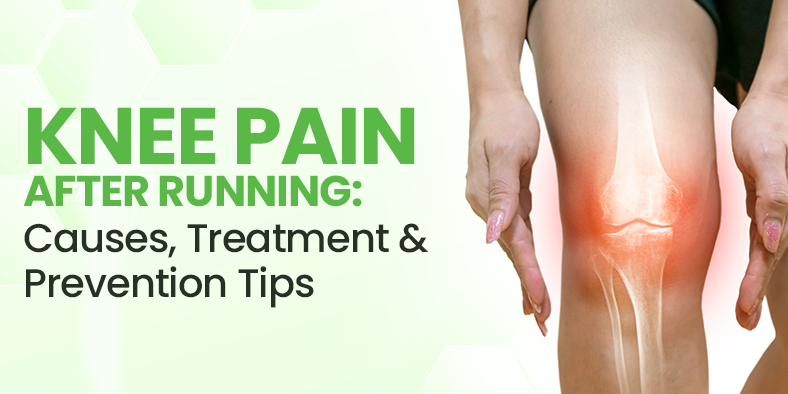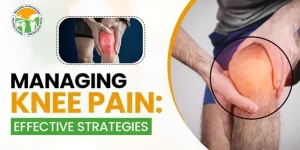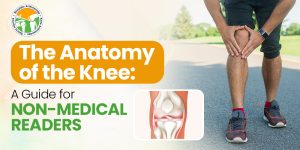Running is an exercise most people can access easily. Running creates cardiovascular fitness, offers positive brain activity, and a sense of accomplishment; thus, it is an effective form of exercise. Yet, knee pain is a common disruption that runners face, and often a reason for missed training sessions and reduced progress. Furthermore, understanding the reasons runners can develop knee pain, the symptoms, and when to seek medical intervention is an important first step toward recovery and prevention.
Why Runners Often Face Knee Pain?
Knee pain is common due to the repetitive force of running that can reach up to three times the runner’s body weight with every foot strike. More often than not, constant stresses damage the knee if some biomechanical characteristic is off or a support muscle for the knee is weak. Although there is certainly an element of individual flavour to running (overstriding or punching one’s feet into the ground, which are both versions of heel striking), one can see how this adds load to the knee during running. Muscle imbalances are important to examine for weak quadriceps, tight hamstrings, or underactive glutes are known to be potential instability to the knee joint and overall knee injury risk.
Another potential factor is overtraining. Many runners, especially novice runners, tend to increase their mileage and intensity too quickly, and therefore, they do not give their joints and connective tissues time to adapt. Therefore, runners may develop overuse injuries that account for almost half of knee issues related to running.
Common Causes of Knee Pain After Running
1. Runner’s Knee (Patellofemoral Pain Syndrome)
This condition causes pain around the kneecap or behind it, often aggravated by activities such as squatting, climbing stairs, or prolonged sitting. Typically associated with muscle imbalances, poor kneecap tracking, or overuse.
2. Iliotibial Band Syndrome (ITBS)
Pain will be noticed on the lateral side of the knee as a result of the iliotibial band being irritated, a thick band of tissue from the hip to the knee, and is usually seen in runners with weak hips and poor running mechanics.
3. Patellar Tendinitis (jumper’s knee)
A common overuse injury affecting the tendon that connects the patella to the shinbone at the front of the knee. Common in runners who change the frequency and intensity of their training.
4. Patellar Tendinitis (Jumper’s Knee)
Patellar tendinitis is an overuse injury caused by excessive loading of the tendon from the kneecap to the shinbone. It results in pain at the front of the knee and is seen commonly in runners who suddenly overload when they increase their training
5. Meniscus Tears: Injuries to the meniscus
the piece of cartilage that sits between the thigh bone and shin bone, may occur during twisting or initiating a rapid directional change.
Also read: Top 5 Rehab Mistakes People Make After a PCL Injury and How to Avoid Them
Symptoms of Knee Pain
Symptoms of tearing the meniscus may include swelling, stiffness, and the inability to straighten the leg. – Knee Bursitis: Bursae are fluid-filled sacs that help cushion the knee. Bursitis occurs when the bursae become inflamed due to overuse, compression, or a change in knee position. Bursitis will typically result in pain and swelling in the knee, especially after repetitive activity or compression. – Osteoarthritis: Osteoarthritis or arthritis is more common with age, but many runners will develop some arthritis after experiencing a knee injury. It can lead to chronic pain in the knee as well as stiffness/limited motion. Symptoms of Knee Pain: Recognizing the signs and symptoms of knee pain early will reduce the risk of aggravating or injuring tissues in the knee joint. Some common symptoms are: – Dull aching pain or sharp pain that is around or behind the kneecap – Swelling or tenderness of the knee – Pain while running, particularly uphill or downhill and after running – Pain while squatting, kneeling or being seated for a long time – Clicking, grinding, and/or instability of the knee joint.
Also read: PCL vs ACL Injuries: What’s the Difference?
When should you see a doctor about your knee pain?
Even though mild knee pain generally resolves in time with some rest and self-care, there are some symptoms that indicate medical treatment is necessary. You should see a doctor if any of the following occur: –
- If the pain does not improve within a few days, even with rest
- If you have marked swelling, redness, or warmth around your knee
- If you are having trouble walking and bearing weight
- If your knee feels unstable or gives way
- If there has been a recent history of trauma to the area or if you experience a sudden, popping pain
A medical professional can do a physical exam and obtain some imaging (X-rays or MRIs) to better understand the issue. This allows for early treatment plans to hopefully avoid chronic issues and lead to a quicker recovery.
Treatment Options for Knee Pain After Running
Your treatment will depend on the issue causing your knee pain, but most likely will consist of a combination of rest, rehabilitation, and lifestyle changes. Here are some common options: –
1. R.I.C.E. Protocol
Icing, Rest, Compression, and Elevation are the first steps for acute knee pain. This will help to reduce inflammation to minimize discomfort.
2. Physical Therapy
A physical therapist can develop a personalized program to strengthen the muscles surrounding the knee, increase flexibility, and correct biomechanical faults. Some of the exercises that may be in this plan include leg-lifts, step-ups, and balance exercises. –
3. Strength Training
Strengthening the quadriceps, hamstrings, glutes, and core muscles to improve joint stability could help limit future injuries. Working squats, lunges, and resistance band exercise into your routine will be beneficial. –
4. Footwear Changes
Wearing the correct running shoes is important, so choose the right shoes for your foot type and running style. Check with a running store specialist if you are not sure of your foot type and running style, and most importantly, replace your shoes every 300-500 miles to benefit from adequate support and cushioning.
5. Medication
Non-steroidal anti-inflammatories (NSAIDs) such as ibuprofen or the available NSAID topical gel might reduce inflammation and manage pain. However, NSAIDs should be taken only if necessary and with caution under medical supervision. –
6. Braces and Taping
Knee braces and/or tape may provide support and limit strain while the knee is recovering. – Return to Running Slowly: Once the symptoms have subsided, the return to running needs to be gradual; start with non-impacting activities slowly and gradually increase your intensity and load while monitoring symptoms in case any pain returns.
Conclusion
Knee pain after running is a very common obstacle, but it doesn’t have to stop you in your fitness journey. With knowledge of the causes, awareness of the symptoms, and effective treatment and prevention practices, runners can minimize the chances of knee pain and keep enjoying running. Regardless of whether you’re a long-time marathoner or an occasional jogger, taking care of your knees will allow you to continue your sport and enjoy a long, performance-driven, pain-free running career.
Golden Clinics’ Dr. Siddharth Aggarwal is available to assist you if you’re hoping to find out the potential causes, treatment, and prevention of knee pain. Dr Siddharth Aggarwal has a great deal of expertise in treating knee injuries, and he offers individualized treatment to make sure your recovery goes well. Make an appointment for a consultation with Golden Clinics right now to start the process of returning to an active lifestyle.



